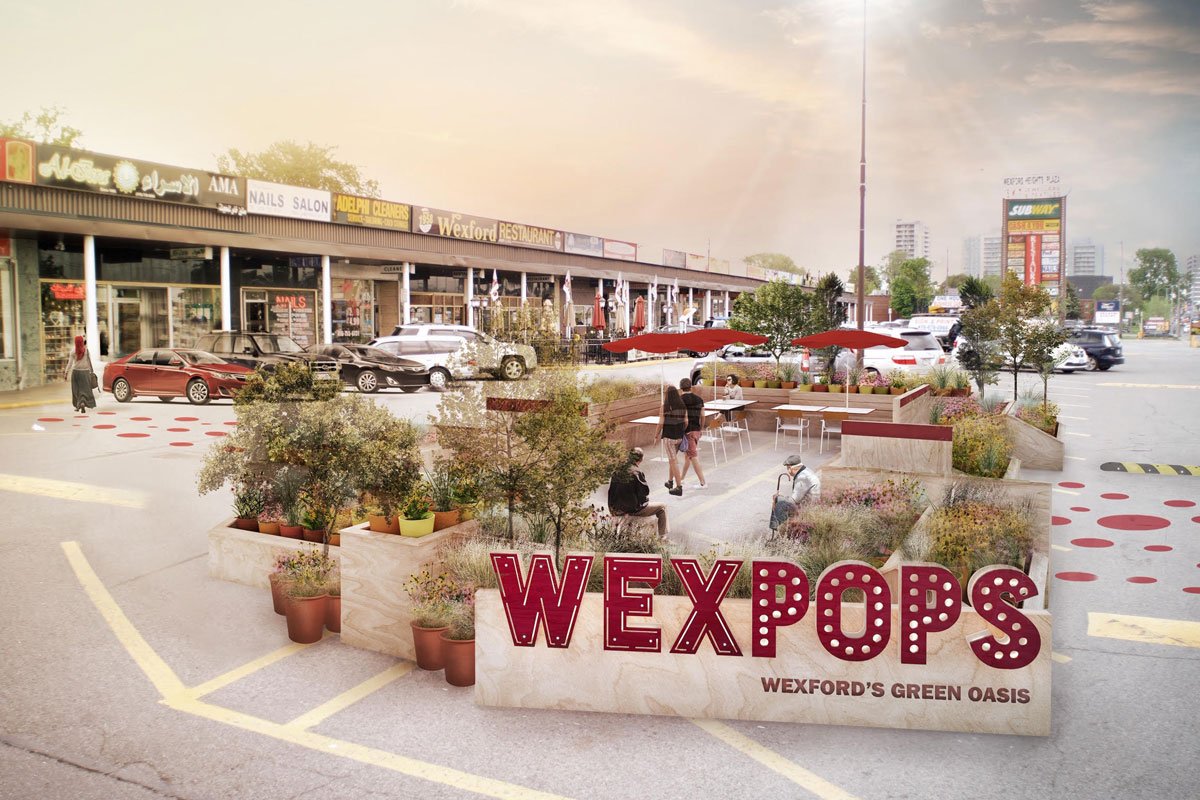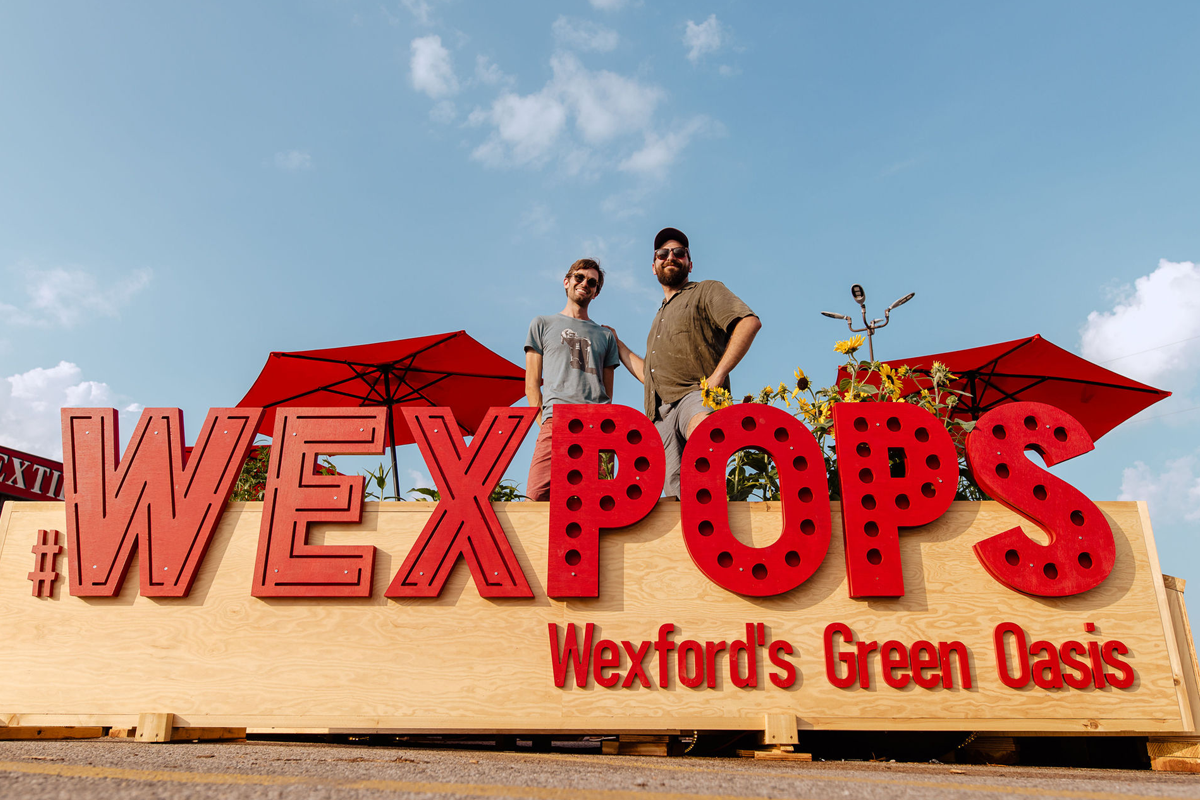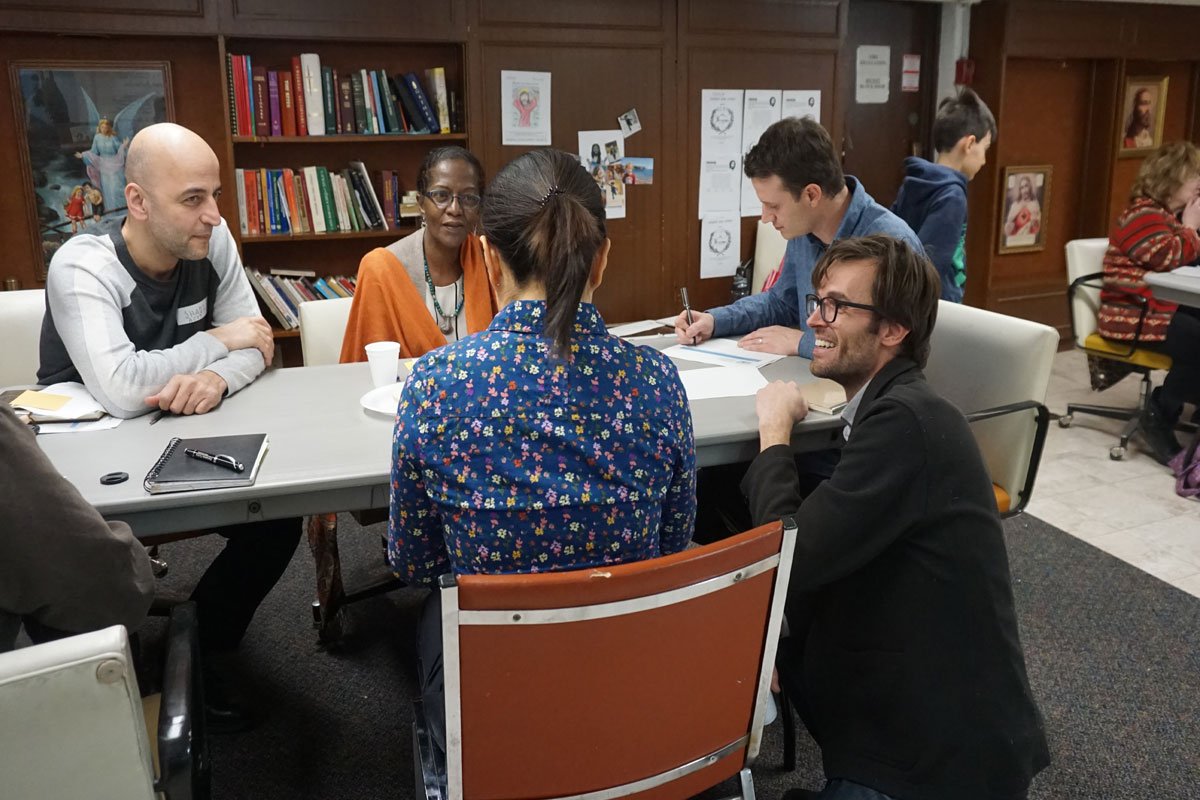
09 Jul 8 Questions with Daniel Rotsztain and Brendan Stewart
In 8 Questions, 8 80 Cities asks amazing partners we’ve worked with, or amazing people doing amazing work 8 questions about their passions, their history and their amazing-ness. And then we ask them to suggest a question for our next interviewee.
This week, 8 80 Cities Project Coordinator Candice Leung spoke to Daniel Rotsztain and Brendan Stewart. Daniel, also known as The Urban Geographer online, identifies as a Toronto based artist, cartographer, writer and a landscape designer. Brendan is a professor of Landscape Architecture at the University of Guelph. Together they are co-leading the plazaPOPS project which proposes pop-up gathering places in privately-owned strip mall parking lots in the inner suburbs. plazaPOPS’ first pilot, called WexPOPS, opened on July 5th in the Wexford plaza in Scarborough. We talked about their approach to public spaces.

Photo Credit: Kat Rizza
8 80 Cities: What is plazaPOPS? How did this work come to fruition?
Daniel Rotsztain: Growing up near strip malls, I was familiar with plazas as a commercial hub of mom and pop shops. It was really in my thesis that I looked deeper into them as an urban typology of public space.
For my thesis, I studied what people liked about plazas and what needed to be improved. I found a lot of plazas where businesses generally cater to local communities and that the creation of community spaces was well aligned with that mission. Secondly, I noted that plaza shopping is both thriving and at risk – people love them but business ebbs and flows, so the idea of creating spaces for people to linger is also strategic. Lastly, the traditional planning tools to improve these spaces are restrictive. For example; plazas are typically privately-owned land, Business Improvement Associations (BIA) are limited in resources especially those in the inner suburbs of Toronto, and the City Neighborhood Improvement programs rarely address the private conditions of plazas specifically. At the end of my research, I was inspired to take action.
At that time, Park People launched their Public Space Incubator grant. I wanted to dedicate efforts to equity in urbanism so working with the Wexford Plaza was a way to step into that. Brendan was on my thesis committee and we jumped at the opportunity.
8 80 Cities: On the heels of the projects launch, what has surprised you so far about this work? Was there anything that you weren’t expecting?
Daniel Rotsztain: Yes! There was willingness from the community to collaborate. At the onset, the community working group was onboard. I’m conscious that we are working in a part of the city that at times vocalizes their opposing political views, views that carry further right than my own. But we are able to find the common ground that public spaces matter in communities. Our goals are harmonious.
I’m also grateful for the willingness of property owners. Something drastic has changed in the last 10 years that we are able to see the value in taking away parking spots for community spaces. When I was doing my research for my thesis, I spoke to a planner at the City who had a similar idea 10 years ago and said that it was a non-starter.
8 80 Cities: Why the Wexford Plaza? Did you take any unique approaches to this work based on this neighborhood?
Daniel Rotsztain: The BIA model of Toronto tends to be less successful in the inner suburbs, but the Wexford BIA is punching above their weight. They demonstrate a lot of success with the Taste of Lawrence festival and have the excitement and support of City Councilor and Deputy Mayor Thompson. WexPOPS builds on that momentum.
In terms of unique approaches there are a few factors I will mention…
- Wexford Plaza is private land so throughout this project we respected the needs of those owners.
- We created a working group and paid them for their efforts. The working group is made up of various community stakeholders and they were paid 2 honorariums of $100 each for 4 working meetings.
- The working group practiced something Brendan and I have been calling ‘Positive Opportunism.” Anyone who is excited about the project was able to jump in and be apart of it.
- Open Houses were planned at the request of the working group. It was their suggestion to engage seniors and youth, so we connected with the Arab Community Centre of Toronto (ACCT) and the Wexford Residential home nearby.
- We worked with ACCT to create a short-term Site Supervisor job to employ newcomer youth.

8 80 Cities: How does the plazaPOPS project integrate an educational component? Why was that important to the project?
Brendan Stewart: We integrated plazaPOPS into the graduate community design studio that I teach as part of our Masters of Landscape Architecture program at Guelph and I think this created a number of valuable opportunities for both the students and the project.
Our 19 students were divided into 6 teams, and each spent the semester creating a unique design concept for the pop-up, developed through a process that involved community feedback and design adjustments, and guidance from Daniel and I. The students attended several community workshops and open houses and spent time getting to know and listening to the community that they were designing for, which is a rare and valuable experience, I think, for young designers. The students had the chance to start developing the sensitivities that are essential to navigating the complexities of working on public space that involved community feedback and design adjustments, and guidance from Daniel and I as well as my colleague at Guelph, Dr. Karen Landman, who has been instrumental to the project.
Involving the students also benefited the project in many ways. The students felt accountable to the community, and were motivated to continually refine their projects, which led to very high-quality work. We published the six concepts on our project website and had a one-month public commenting period. Having this range of options helped to promote the project within the community, but more importantly gave our working group more ideas and approaches to react to than would otherwise have been possible. Ultimately, there were aspects of each student’s project that were very well received, and these were integrated into the final design, that just opened. I think the project is so much stronger because of the student’s dedication and creativity.
Also, early in the process we connected with U of T professor Rafael Gomez, who has done work in the same community, and we then jumped on the opportunity to involve a team of graduate planning and business students through the Rotman CityLAB fellowship program. These students helped us develop research metrics for the public life, parking and economic impact studies that we are conducting. It was fantastic to see cross-pollination between two Universities, and three different disciplines, and this work will be invaluable for us as we measure the impact of the project and consider the possibilities of a broader program in future years.
8 80 Cities: Before the plazaPOPS project, what was your experience working in urbanism like?
Daniel Rotsztain: It was always about provoking discussion and sharing my love for the city through art. The All the Libraries project started when Rob Ford was Mayor and libraries were facing a lot of budgetary cuts. I remember seeing on twitter somewhere that if public libraries were proposed as a new idea today, they would be dismissed as a radical socialist ideal or something…. so the fact that we have them and they thrive in many of our communities is worth celebrating.
I also have believed strongly in the power arts bring to the urbanist narrative to communicate what is happening in cities. It’s something I want to continue to contribute to and encourage others to do so as well.
Brendan Stewart: Before joining the University, I practiced as a landscape architect and heritage planner with ERA Architects in Toronto and was involved with a number of public space projects including park and campus revitalizations, but my main interest and passion has always been working with communities on strategies to re-purpose under-utilized space in the inner suburbs. I worked actively on Tower Renewal projects for eight years, and was the landscape architect for two previous parking lot to community space conversion projects — the East Scarborough Storefront (a few kilometres east of our WexPOPS site) and Ridgeway Community Courts, a basketball court built on a parking lot in Mississauga. I’m interested in the mysterious power that can be created through a rich engagement process; how a group of people can come together and create something special that is enriching to people and communities. It takes long hours but it’s fun and so gratifying, and I love meeting new people.
8 80 Cities: What would you say is the biggest challenge for creating great public spaces?
Brendan Stewart : In design, people say that every great project has a great client. I think that’s true, but when we’re talking about public space, which I believe is so fundamentally important to the health of our culture and environment, I think it’s even more important to have a great process. A great process explores, challenges, and tests a range of ideas, perspectives and approaches, and builds bridges to a collective vision that best reflects the goals of the project. Public space is too valuable to not be vetted through an intensive public process.
I think we’re getting better at this, but too often our design processes have problems baked into them that don’t allow us to maximize their value. Often the designers / planners / facilitators who lead the process of creating public space are constrained by a generic approach that was committed to before the nature of the project was understood, and which may not be adequate to address the particular challenges of the project, or an approach that is isn’t flexible to allow the process to adapt to new opportunities that may arise.
8 80 Cities: Our last interviewee, Dr. Zhixi Zhuang, Associate Professor at Ryerson University’s School of urban and regional planning asks how you think we can construct a common ground to embrace diversity and difference to create inclusive spaces?
Daniel Rotsztain: I’d say by recognizing that most people want the same things – a good life, a strong community… But we all have different perspectives on how to get there. I don’t think it’s something we can reduce to an egalitarian approach. I’ve grown to not idealizing equality but recognizing that there are real differences and working with them has been helpful.
8 80 Cities: What question would you have for our next interviewee?
Daniel Rotsztain: I would ask how we can authentically engage with people who are not currently being engaged in the consultation process. I know this may sound like the previous question, but it’s a topic that’s worth discussing at length.
I think consultations can still just be lipstick on a pig… Even the language we sometimes use to promote consultations are confounding and it reminds me that there should be better ways to communicate with others about public spaces.
8 80 Cities: Thanks! Is there anything you’d like to add before we end off?
Daniel Rotsztain: Just on the note about working on community projects in a community that isn’t yours…. It’s a part of the DNA of the plazaPOPS project that we didn’t grow up in Wexford and don’t live there now, and it is also very much the nature of professional planners to work in communities that are not your own. Recognizing that there are local change makers is important. It’s also important not to shy away from who you are as you navigate this kind of work. Being honest about your identity matters. Being forward about who you are, the really great idea you bring and a grant to make it happen sets the tone for an authentic consultation.



